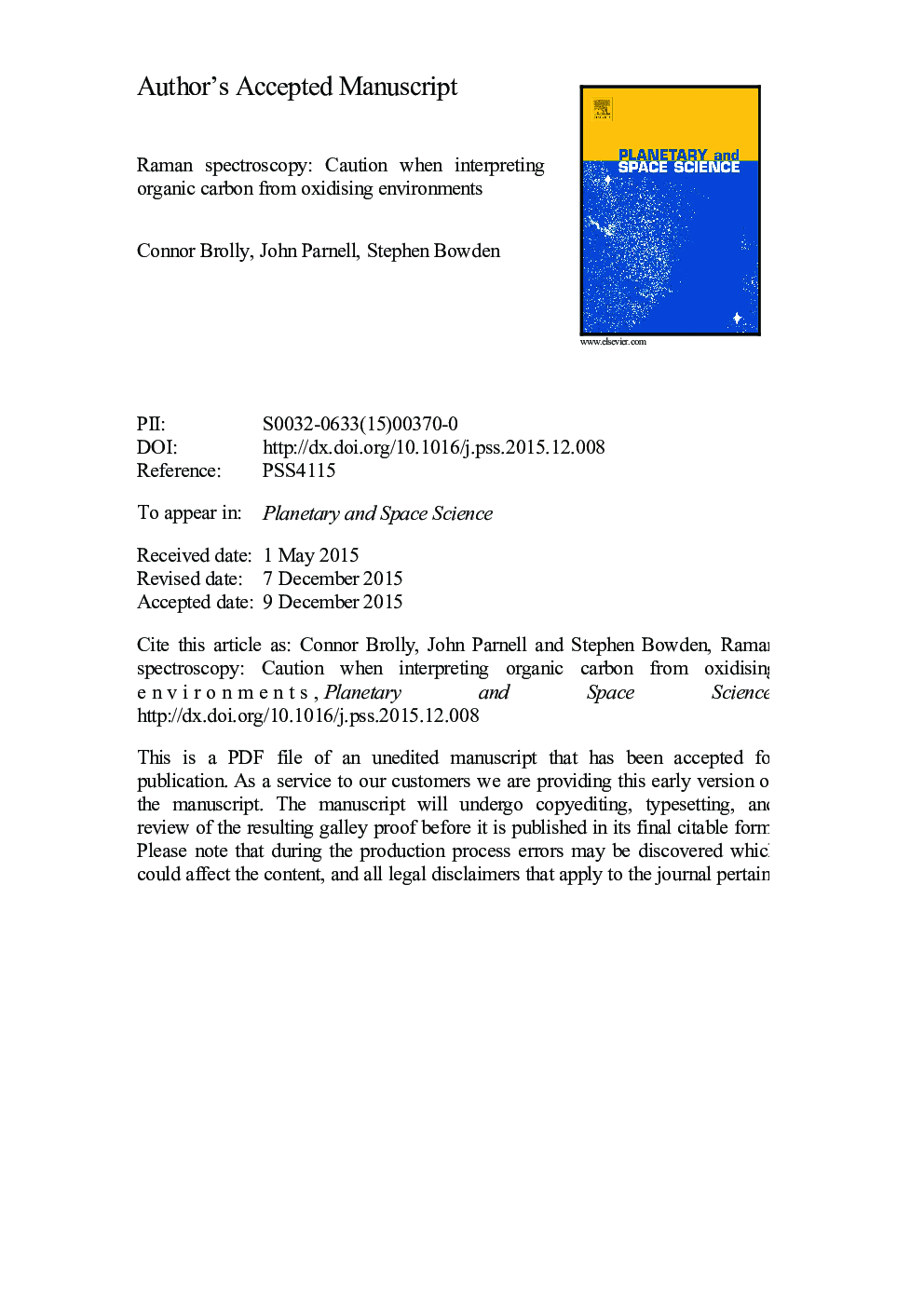| کد مقاله | کد نشریه | سال انتشار | مقاله انگلیسی | نسخه تمام متن |
|---|---|---|---|---|
| 8142820 | 1523919 | 2016 | 20 صفحه PDF | دانلود رایگان |
عنوان انگلیسی مقاله ISI
Raman spectroscopy: Caution when interpreting organic carbon from oxidising environments
ترجمه فارسی عنوان
طیف سنجی رامان: هنگام تفسیر کربن آلی از محیط های اکسیداسیون، احتیاط کنید
دانلود مقاله + سفارش ترجمه
دانلود مقاله ISI انگلیسی
رایگان برای ایرانیان
کلمات کلیدی
موضوعات مرتبط
مهندسی و علوم پایه
علوم زمین و سیارات
فیزیک زمین (ژئو فیزیک)
چکیده انگلیسی
Oxidation on Mars is primarily caused by the high influx of cosmic and solar radiation which interacts with the Martian surface. The evidence of this can be seen in the ubiquitous red colouration of the Martian sediment. This radiation will destroy most signals of life in the top few metres of the Martian surface. If organic carbon (one of the building blocks of life) is present within the accessible Martian sediments, it is very likely that it will have experienced some oxidation. ESA׳s ExoMars mission set to fly in 2018, has on board a miniaturised Raman spectrometer. As Raman spectroscopy is sensitive to carbonaceous material and will be primarily used to characterise organics, it is essential that the effect oxidation has on the Raman carbon signal is assessed. Oxidised carbonaceous shales were analysed using Raman spectroscopy to assess this issue. Results show that haematite has a band which occurs in the same frequency as the carbon D band, which cannot be distinguished from each other. This can lead to a misidentification of the carbon D band and a misinterpretation of the carbon order. Consequently, caution must be taken when applying Raman spectroscopy for organic carbon analysis in oxidised terrestrial and extraterrestrial environments, including on Mars.
ناشر
Database: Elsevier - ScienceDirect (ساینس دایرکت)
Journal: Planetary and Space Science - Volume 121, February 2016, Pages 53-59
Journal: Planetary and Space Science - Volume 121, February 2016, Pages 53-59
نویسندگان
Connor Brolly, John Parnell, Stephen Bowden,
